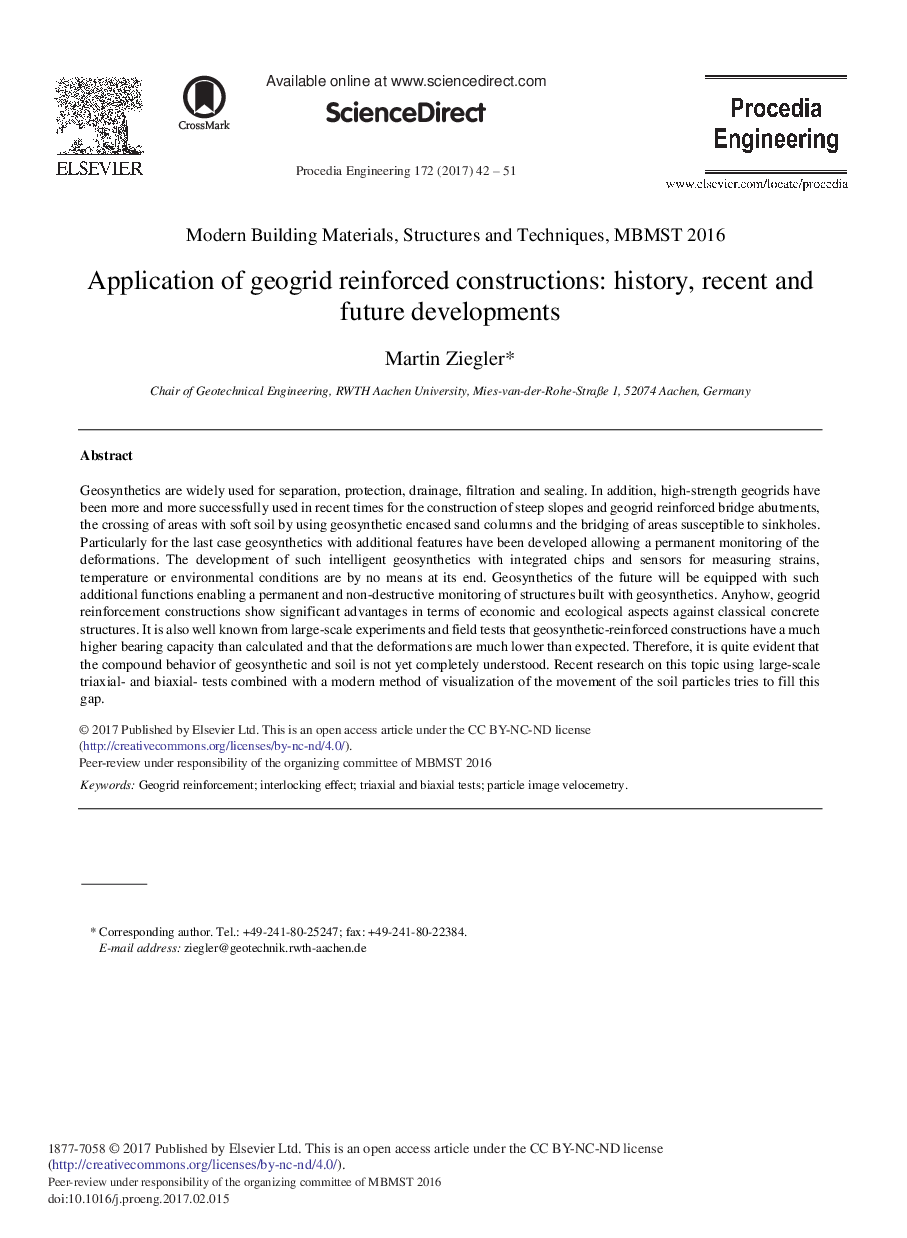| کد مقاله | کد نشریه | سال انتشار | مقاله انگلیسی | نسخه تمام متن |
|---|---|---|---|---|
| 5028637 | 1470654 | 2017 | 10 صفحه PDF | دانلود رایگان |
عنوان انگلیسی مقاله ISI
Application of Geogrid Reinforced Constructions: History, Recent and Future Developments
ترجمه فارسی عنوان
استفاده از سازه های تقویت شده ژئوگرید: تاریخ، تحولات اخیر و آینده
دانلود مقاله + سفارش ترجمه
دانلود مقاله ISI انگلیسی
رایگان برای ایرانیان
کلمات کلیدی
تقویت ژئوگرید، اثر متقابل، تست های دو طرفه و دو طرفه، سرعت سنجی تصاویر ذرات
موضوعات مرتبط
مهندسی و علوم پایه
سایر رشته های مهندسی
مهندسی (عمومی)
چکیده انگلیسی
Geosynthetics are widely used for separation, protection, drainage, filtration and sealing. In addition, high-strength geogrids have been more and more successfully used in recent times for the construction of steep slopes and geogrid reinforced bridge abutments, the crossing of areas with soft soil by using geosynthetic encased sand columns and the bridging of areas susceptible to sinkholes. Particularly for the last case geosynthetics with additional features have been developed allowing a permanent monitoring of the deformations. The development of such intelligent geosynthetics with integrated chips and sensors for measuring strains, temperature or environmental conditions are by no means at its end. Geosynthetics of the future will be equipped with such additional functions enabling a permanent and non-destructive monitoring of structures built with geosynthetics. Anyhow, geogrid reinforcement constructions show significant advantages in terms of economic and ecological aspects against classical concrete structures. It is also well known from large-scale experiments and field tests that geosynthetic-reinforced constructions have a much higher bearing capacity than calculated and that the deformations are much lower than expected. Therefore, it is quite evident that the compound behavior of geosynthetic and soil is not yet completely understood. Recent research on this topic using large-scale triaxial- and biaxial- tests combined with a modern method of visualization of the movement of the soil particles tries to fill this gap.
ناشر
Database: Elsevier - ScienceDirect (ساینس دایرکت)
Journal: Procedia Engineering - Volume 172, 2017, Pages 42-51
Journal: Procedia Engineering - Volume 172, 2017, Pages 42-51
نویسندگان
Martin Ziegler,
